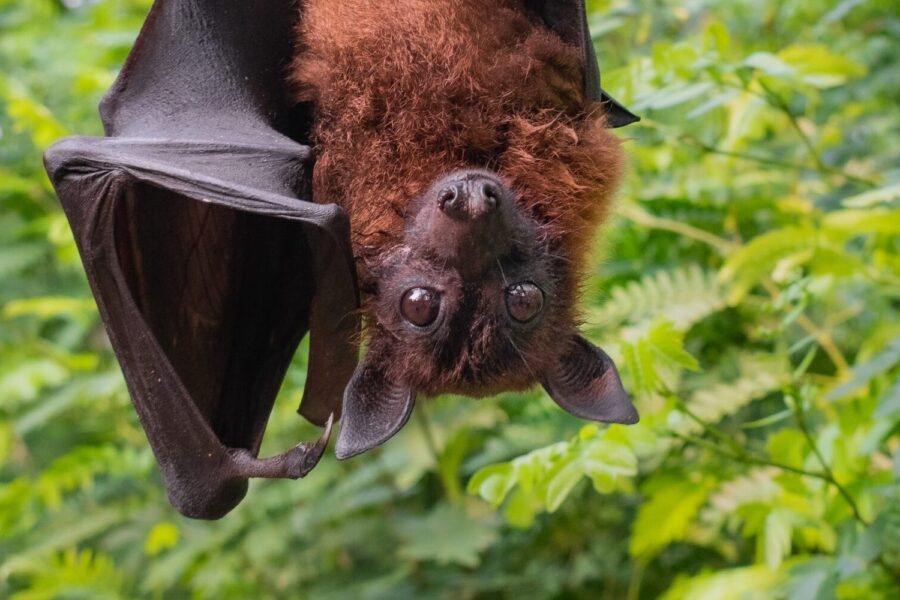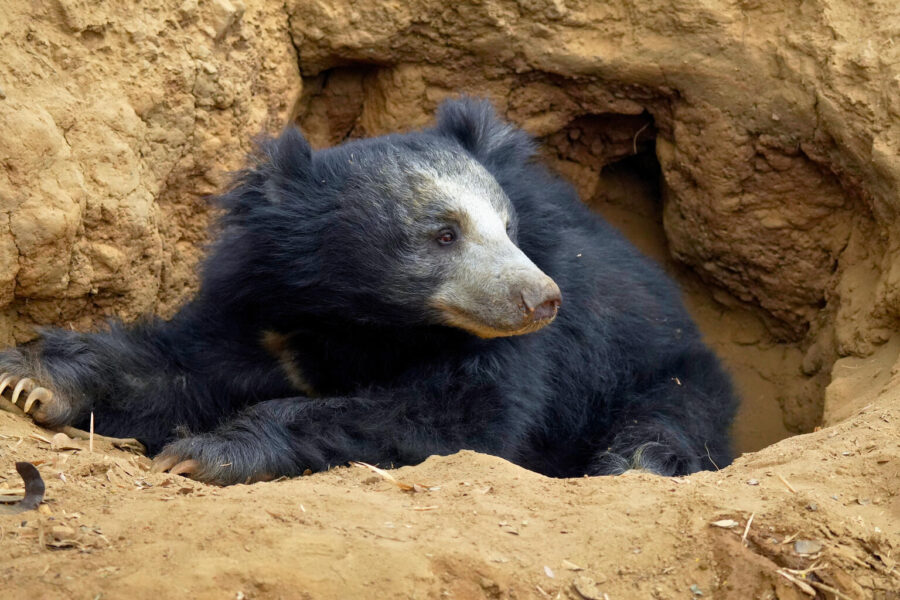Causing stiffness, swelling and sometimes unbearable pain in the affected joints, arthritis affects a sizeable number of people in the world, hindering their mobility and everyday activities, and causing them immense discomfort and pain. Living with arthritis can be unimaginably difficult, and studies have shown that the resulting pain and restricted physical activity often lead to severe mental distress as well, even resulting in cases of depression.
What many people don’t realize, is that we’re not the only species that is plagued with this debilitating condition- animals get arthritis too, and it’s just as painful and distressing for them.
At Wildlife SOS, we work with rescued animals that have been severely abused and neglected for the entirety of their lives, and thus come into our care with a host of health conditions in desperate need of medical attention. Arthritis is one of the more common issues that our rescued animals have to deal with.
“As ‘dancing’ bears, sloth bears are made to perform standing upright on their hind legs for long periods of time. This is not a natural position for an animal as heavy set as a bear, and causes immense strain on the bones of the hind leg,” explains Dr. Ilayaraja, Senior Veterinarian at Wildlife SOS’ Agra Bear Rescue Facility, “Coupled with the poor nutrition provided to these animals, this can have devastating results on the health of the bears, causing weakened and cracked bones, and other similar problems.”
 Julie, one of the rescued dancing bears at the Agra Bear Rescue Facility, is one of the many animals at the centre that still suffer from arthritic hind limbs, resulting from the poor diet and torturous performances from her past life. Julie doesn’t have the strength to stay in the same enclosure as other bears, and thus lives with her closest companion at the rescue centre, the small, friendly Gail, because she too has arthritis. In another part of the sanctuary, Monisha bear displays a limp that confirms suspicions that she has the same problem. The vets at ABRF put the arthritic bears on medication to improve their condition and to manage the immense pain that the disease causes, along with strict nutritious diets supplemented with multi-vitamins, calcium and phosphorous doses.
Julie, one of the rescued dancing bears at the Agra Bear Rescue Facility, is one of the many animals at the centre that still suffer from arthritic hind limbs, resulting from the poor diet and torturous performances from her past life. Julie doesn’t have the strength to stay in the same enclosure as other bears, and thus lives with her closest companion at the rescue centre, the small, friendly Gail, because she too has arthritis. In another part of the sanctuary, Monisha bear displays a limp that confirms suspicions that she has the same problem. The vets at ABRF put the arthritic bears on medication to improve their condition and to manage the immense pain that the disease causes, along with strict nutritious diets supplemented with multi-vitamins, calcium and phosphorous doses.
Down the road from ABRF, the veterinarians at Wildlife SOS’ Elephant Conservation and Care Centre, are treating the same disease on a much larger scale.
Dr. Vibha, one of the veterinarians at the centre, says, “An elephant’s massive frame puts so much pressure on its limbs, so it’s unsurprising that the ones in our care come here with arthritis, considering the improper care they were subjected to before.”
Take the case of Asha. This tall, magnificent female elephant spent nearly 45 years of her life as a tourist attraction in the city of Jaipur, where she trudged up the steep slopes to Amer Fort multiple times each day, carrying people on her back in a heavy seat-like contraption, weighing nearly 600 kilos. An elephant’s back is not strong enough to carry such heavy weights, and this puts immense pressure on the animal’s limbs. The stress on her joints ultimately resulted in an injury that meant she could no longer climb the steep incline. Realising this, Asha’s owners sold her off, but unfortunately her troubles were far from over, and she had to continue as a working elephant- begging on the streets- walking for long hours on hot tarred roads, with no rest and little food or water, which aggravated the arthritis.
 Like Asha, seven more elephants at ECCC came to us with bad cases of arthritis and in desperate need of expert veterinary care. The poor nutrition and long, strenuous working hours in awful conditions that working and begging elephants like Raju, Bijli, Bhola, Phoolkali and Lakhi endure, are sure gateways to arthritic limbs. The oldest elephant at ECCC, the tiny Suzy, is also terribly arthritic- after an entire life of suffering in the circus, Suzy’s limbs just couldn’t take it anymore. When she wasn’t being forced to perform in uncomfortable, unnatural positions, the little elephant spent hours standing tied to one place on a hard surface, in unbelievably unhygienic conditions.
Like Asha, seven more elephants at ECCC came to us with bad cases of arthritis and in desperate need of expert veterinary care. The poor nutrition and long, strenuous working hours in awful conditions that working and begging elephants like Raju, Bijli, Bhola, Phoolkali and Lakhi endure, are sure gateways to arthritic limbs. The oldest elephant at ECCC, the tiny Suzy, is also terribly arthritic- after an entire life of suffering in the circus, Suzy’s limbs just couldn’t take it anymore. When she wasn’t being forced to perform in uncomfortable, unnatural positions, the little elephant spent hours standing tied to one place on a hard surface, in unbelievably unhygienic conditions.
Laxmi, among the most popular elephants at ECCC, spent nearly 20 years as a begging elephant in Maharashtra, where she was forced to subsist on the sugar-laden, oily food given as temple offerings by pilgrims, instead of natural green fodder. She became dangerously overweight, due to this unhealthy diet and a complete lack of exercise. By the time she was rescued, Laxmi’s joints were already developing arthritis.
All our elephants are put on strict, nutritious diets and get healthy amounts of exercise to prevent them developing arthritis later on in life, and ensuring that it is kept in check for those that already suffer from the disease. In addition, the animals are given necessary nutritional supplements and are given regular medical checkups to ensure that their condition is stable. Wildlife SOS is in consultation with international veterinary experts in the field of acupuncture, who have previously treated arthritis in big cats and elephants in the USA and are keen to introduce the therapy to our elephants, to ease the pain of the disease.
Would you like to support the treatment of one of our rescued animals and help us give them the pain-free, happy life they deserve? Follow this link to donate to the care of our rescued animals.




